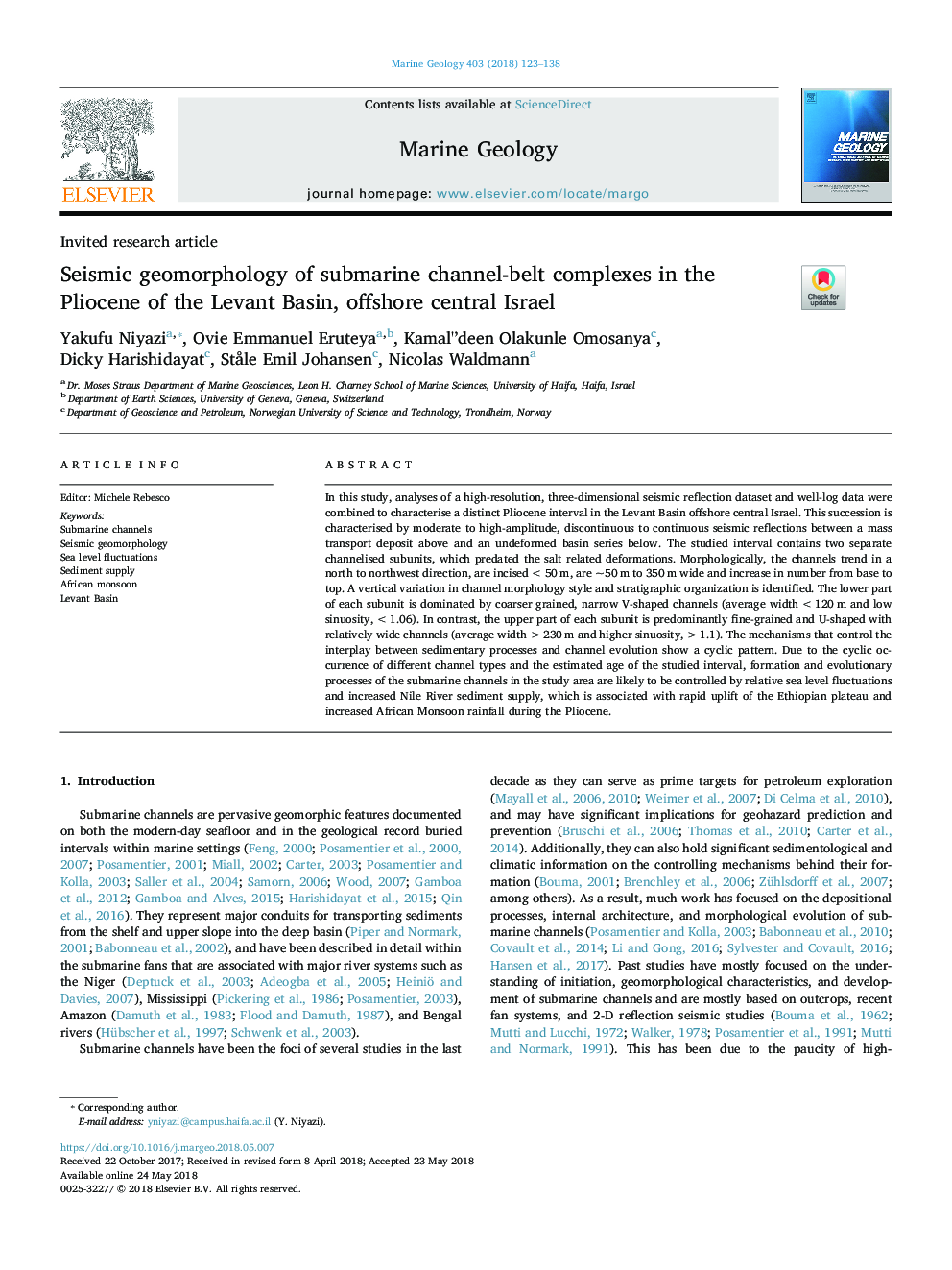| Article ID | Journal | Published Year | Pages | File Type |
|---|---|---|---|---|
| 8911924 | Marine Geology | 2018 | 16 Pages |
Abstract
In this study, analyses of a high-resolution, three-dimensional seismic reflection dataset and well-log data were combined to characterise a distinct Pliocene interval in the Levant Basin offshore central Israel. This succession is characterised by moderate to high-amplitude, discontinuous to continuous seismic reflections between a mass transport deposit above and an undeformed basin series below. The studied interval contains two separate channelised subunits, which predated the salt related deformations. Morphologically, the channels trend in a north to northwest direction, are incised <50â¯m, are ~50â¯m to 350â¯m wide and increase in number from base to top. A vertical variation in channel morphology style and stratigraphic organization is identified. The lower part of each subunit is dominated by coarser grained, narrow V-shaped channels (average width <120â¯m and low sinuosity, <1.06). In contrast, the upper part of each subunit is predominantly fine-grained and U-shaped with relatively wide channels (average width >230â¯m and higher sinuosity, >1.1). The mechanisms that control the interplay between sedimentary processes and channel evolution show a cyclic pattern. Due to the cyclic occurrence of different channel types and the estimated age of the studied interval, formation and evolutionary processes of the submarine channels in the study area are likely to be controlled by relative sea level fluctuations and increased Nile River sediment supply, which is associated with rapid uplift of the Ethiopian plateau and increased African Monsoon rainfall during the Pliocene.
Keywords
Related Topics
Physical Sciences and Engineering
Earth and Planetary Sciences
Geochemistry and Petrology
Authors
Yakufu Niyazi, Ovie Emmanuel Eruteya, Kamal''deen Olakunle Omosanya, Dicky Harishidayat, Ståle Emil Johansen, Nicolas Waldmann,
